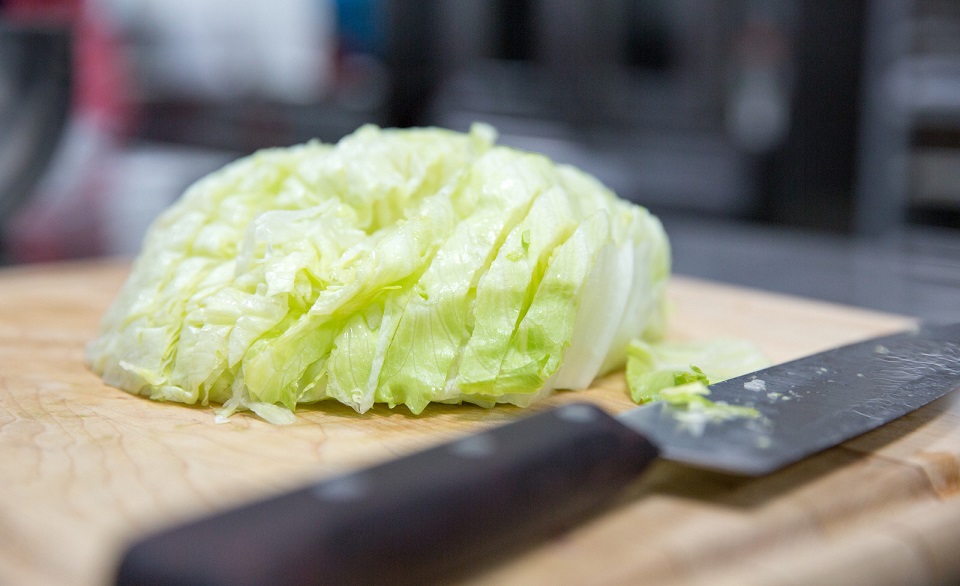UNDERSTANDING TIME AS A CONTROL FOR PUBLIC HEALTH
Much of our business that revolves around food safety is governed by temperatures. The endpoint cooking temperature of ground beef, the hot holding temperature on the line, the temperature of our refrigerators, or what the key temperatures are for cooling – the temperatures that many of us can recite in our sleep. But there are times when temperature control is just simply not possible. I remember several instances in my foodservice life where we didn’t have the luxury of having refrigeration, or where we were catering an outdoor event, and no matter how “windproof” our sternos and chaffing dishes were meant to be, the brisk Iowa wind would blow out the flame. This is where the food code section on time as a public health control comes into play.
Last week, I was helping with the development of a food safety exam, and I was reminded of just how confusing and misunderstood this section of the food code could be – for employees, managers, and seasoned professionals, alike. The code spells out this information in Section 3-501.19.
We all know that hot food must be kept at a temperature greater than 135˚F and cold food less than 41˚F, but at times when you are not able to maintain those temperatures, the code allows you to use time to keep food safe. To use this provision of the code, you do have to have a written procedure that you have prepared in advance, which can be made available to the inspector if they inquire about your procedures.
WE ALL KNOW THAT HOT FOOD MUST BE KEPT AT A TEMPERATURE GREATER THAN 135˚F OR LESS THAN 41˚F, BUT WHEN YOU ARE NOT ABLE TO MAINTAIN THOSE TEMPERATURES, THE CODE ALLOWS YOU TO USE TIME AS A MEASURE TO KEEP FOOD SAFE.
The next requirement is to make sure you have held the food properly at the correct temperature before you remove it from temperature control. In the case of hot food, it should be held at a temperature greater than 135˚F and cold food should have been kept at a temperature less than 41˚F.
Then, once it is removed from temperature control (for example, placed on a buffet line), record the time of when it was removed from temperature control and when it must be discarded. Once the four-hour mark has been reached, the food must have been served or discarded. It cannot be reheated to temperature and saved, or served again, it must be discarded.
There is, however, also a provision in the code that allows you to keep food for up to a maximum of six hours. This is only permissible for cold food (that is, food removed from temperature control at 41˚F or less). Again, the food shall be marked with the time at which it was removed from temperature control and the time at which the six-hour point will be met, at which point the food must be either served, cooked and served, or discarded. However, the food at no point shall exceed 70˚F during this six-hour period. Once the food exceeds the 70˚F point, it must be discarded.
Now for the usual disclaimer that I add at any time I discuss the food code. It is vital that you know your local food code and if the time as a public health control is allowed for in your specific jurisdiction and if there are any specific nuances that differs from the Model Food Code, which is what I base all of my blogs off, currently the 2022 code. Each jurisdiction has the ability to adopt any part of the model code or amend it to fit their standards, so when it doubt, call your inspector. Risk Nothing.
READ MORE POSTS
Greens & Spinach – Please Lettuce Be Safe to Eat
According to the new food nutrition pyramid, we are to eat at a minimum, around 3 cups of dark green vegetables along with other servings of fruits and vegetables each week. That is becoming more difficult as outbreaks such as E. coli 0157:H7 creates bad news for the produce industry, not to mention the victims.
Refrigeration Tips to Keep Your Food Safe
A refrigerator is one of the most important pieces of kitchen equipment for keeping foods safe. In a food service environment, our existence depends on the cooling equipment. The science of refrigeration has evolved from prehistoric times when man found his wild game would last longer packed in the coolness of a cave or packed in snow. Our ancestors harvested ice to keep food cold. Now, if the power goes off, we are instantly reminded of the refrigerator’s importance to our daily life, at home and certainly in a food service facility.
Food Service Hand Hygiene: Basic Handwashing – Part II
Ignoring handwashing as a priority is easy until faced with a crippling lawsuit. Your risk of transmitting a foodborne disease via a food workers hands will never be zero, but the good news is training your crew about handwashing is not complicated. Molding behavior to do it at the right time, using the correct method is the tough part. The Centers for Disease Control & Prevention says the single most effective way to stop the spread of infection is through handwashing. Last month’s article was on the physical equipment to help get better handwashing compliance. The most important part is the practice of the basic handwashing steps:
The Physical Elements of Food Service Hand Hygiene – Part I
September is National Food Safety Education Month and the theme has a rhyme to it – “Keep Hands Clean with Good Hygiene”. Hand washing is one of the public’s best defenses against the spread of both common and rare, even life-threatening, diseases including those caused by food, and against gastrointestinal infections caused by such organisms as the Norovirus, which plagues the cruise ship industry and food service in general.










